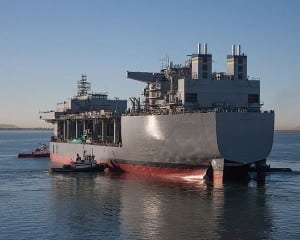
Later this summer the Navy plans to experiment with putting the Littoral Combat Ship (LCS) mine countermeasures (MCM) mission package on expeditionary sea bases (ESBs) as a vessel of opportunity, a Navy official said on Wednesday. Capt. Scott Searles, the program manager for strategic and theater sealift, which covers ESBs, said the service is “trying to figure out how would it be possible to adapt a mine countermeasure mission package for use on a ESB, and so that’s the vessel…

 By
By 











